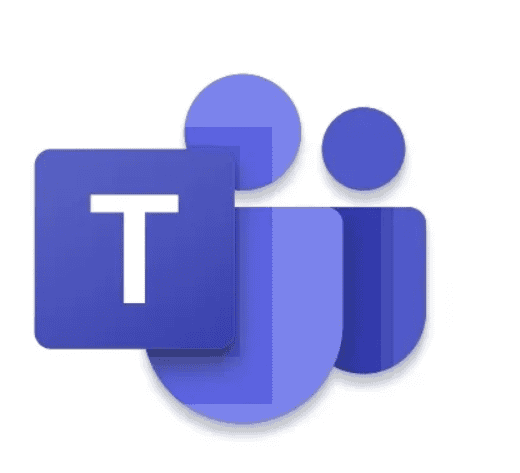Finally it’s here: Microsoft Teams embedded chat in Dynamics 365. I have waited a long time for this functionality to become available as I am sure many of you have as well! Today this feature is in preview as part of 2021 release wave 2. This might not be available in your environment when this article comes out, but that just means you will have to wait just a little longer to start playing around with it. However, this feature is being rolled out across environments as we speak. I believe this is going to be a game changer for Microsoft because a lot of organizations have implemented the Microsoft Teams application throughout their businesses. I’m sure you’re familiar with a lot of the Microsoft Teams functionality such as chat, making and receiving calls, and even streamlining approval processes. Previously we had a somewhat limited functionality which allowed users to pin Dynamics 365 data inside of the Microsoft Teams application, allowing users to work on Dynamics 365 data straight from the Teams application, but with this first update this integration will become a lot tighter: users will be able to link chats with internal or external contacts to a Dynamics 365 record, without the need to dig through loads of chat sessions in order to find the relevant chat. Keep in mind this feature is currently in public preview, so it’s not completely mature yet! Microsoft has a lot more functionality in store for us, but that will come out later this year and early next year. Some of these features related to Dynamics 365 Sales are listed below:
- Editing a Dynamics 365 record within a Microsoft Teams conversation
- Sharing Dynamics 365 records in a Microsoft Teams message
- Adding activities and notes to Dynamics 365 records from within a Microsoft Teams chat or channel
- Driving seller productivity with a seamless experience between Dynamics 365 and Microsoft Teams meetings
- Keeping stakeholders in the loop by sending automated chat notifications from Dynamics 365 to Microsoft Teams
- Adding stakeholders to Microsoft Teams chat using suggested contacts
- Collaborating with key stakeholders using Microsoft Teams chat from Dynamics 365
Keep in mind the Microsoft Teams integration is not strictly related to Dynamics 365 Sales. Users will be able to take advantage of this functionality throughout the other apps as well.
Enable the preview
When you log into the Dynamics 365 Sales Hub and navigate to the ‘App Settings’ area and then to the ‘Chat and Collaboration’ section, you’ll notice there are some additional options related to the Microsoft Teams integration that have become available for you to turn on. If your organization doesn’t use Dynamics 365 Sales, you can also find this feature in the Dynamics 365 Customer Service Hub. When you visit the ‘Service Management’ area you’ll notice an additional section on the sitemap called ‘Microsoft Teams Integration’ which will allow you to turn on the feature from here. I didn’t find a place in Dynamics 365 Field Service to turn this on.

When you turn the ‘Teams chats inside Dynamics 365’ functionality on (please note you’ll need tenant administrator privileges to do so) you’ll notice that an additional icon will show up on the top right side of the screen (where you can also access quick create forms and advanced find) after you refresh your screen. When you click the icon you’ll notice that the collaboration hub opens up in a side panel next to the page you are on. This will show you the embedded Microsoft Teams application in Dynamics 365. You’ll notice two tabs on the top of the collaboration hub, one for chat and one for teams. Let’s start with the chat tab.
Chat Tab
On the chat tab you’ll notice two different sections: chats linked to a Dynamics 365 record and a section showing all other chats. In order to access any of the chats you can just click on the chat you want to open. You’ll also notice two icons on the top right of the pane, one to filter out chats by name, allowing you to find the appropriate chat you’re looking for, and and option to start a chat. When you start a new chat from here, this chat will be located in the ‘other chats’ section in Microsoft Teams. If you want to start a new chat that is linked to the current record in Dynamics 365, you’ll need to click the ‘New linked chat’ button in the collaboration pane, which is located below the linked chats section. Users can also hover over any of the existing chats in the ‘other chats’ section, right click on the ellipse (…) that becomes visible to start a linked chat. This is also where users can link an existing chat to a Dynamics 365 record.
This works similarly for chats that have already been linked to a record in Dynamics 365. When a user hovers over a linked chat and click the ellipse, they have the ability to unlink the chat from the Dynamics 365 record.

When a user clicks on any of the chats that are listed in the collaboration hub, the chat will open in a separate window, sitting ‘on top’ of the Dynamics record. There is currently not an option to drag the chat window to a different section of your screen. There are certain actions the user can perform while the chat window is open; the chat can be closed or minimized, and other users can be added to the chat by clicking on the ‘person’ icon in the chat window. When a user clicks on the ellipse (…) in the chat window, they have the ability to open the chat in the Microsoft Teams application.
At any point in time a user can have 4 chats open simultaneously. If they open a fifth chat, the first chat will close and the 4th chat will open instead.
Teams Tab
When you open the teams tab in the collaboration hub you’ll see the Microsoft Team channel(s) that have been linked to the record in Dynamics 365. I noticed in my environment that a Teams channel that no longer exists had been linked to a Dynamics 365 opportunity record, but there didn’t seem a way for me to remove the connection to the channel from the collaboration hub. If you want to remove the connection between the Teams channel and the Dynamics 365 record, you’ll need to do this by opening Microsoft Teams and removing the Dynamics 365 tab from the channel. Once this is completed you’ll notice the teams channel is no longer linked to the Dynamics 365 record.

In order to link Teams channels to a Dynamics 365 records you can do this from within the collaboration hub in Dynamics 365 by opening the channels tab and clicking on the ‘Link a channel to this record’ button, which will allow you to choose a Team and a related channel. If you need to create a new channel under this team, you can do this here as well. Teams will pickup who the owner of the record is, and allow you to add this user as a member if the channel is private. Another way to link the channel to a Dynamics 365 record is what we were able to do before: add a Dynamics 365 tab and selecting the record you want to link the channel to. After the link it successful you’ll notice the channel show up in Dynamics 365 in the collaboration hub.
I hope you enjoyed this article! If you want to learn more about Microsoft Teams embedded chat in Dynamics 365 check out my second article on this topic which I wrote in January 2022. You can access the full article here. Be sure to check in again next week for a new article or subscribe here to never miss another post!
About the Author:
Hi, my name is Dian Taylor. I was born and raised in the Netherlands and I moved to the United States in early 2004. I am a Microsoft Dynamics 365 (aka CRM) Presales Engineer at RSM. I have worked with Microsoft D365 Customer Engagement (formally known as Dynamics CRM) since 2011 and I am the proud recipient of the Microsoft Business Applications MVP Award.
I started working with CRM as a Presales and Implementation Consultant and I loved every minute of it! After heading up CRM practices at two different companies, I joined RSM as a Presales Engineer in early 2016. I work with all of the D365-CE modules: Sales, Custer Service, Marketing, Field Service, Project Service Automation. I also like to work with the Portal Connector, Virtal Power Agents and Power Automate.
Reference:
Taylor, D. (2022). MICROSOFT TEAMS EMBEDDED CHAT. Available at: https://d365goddess.com/microsoft-teams-embedded-chat/ [Accessed: 20th May 2022].









